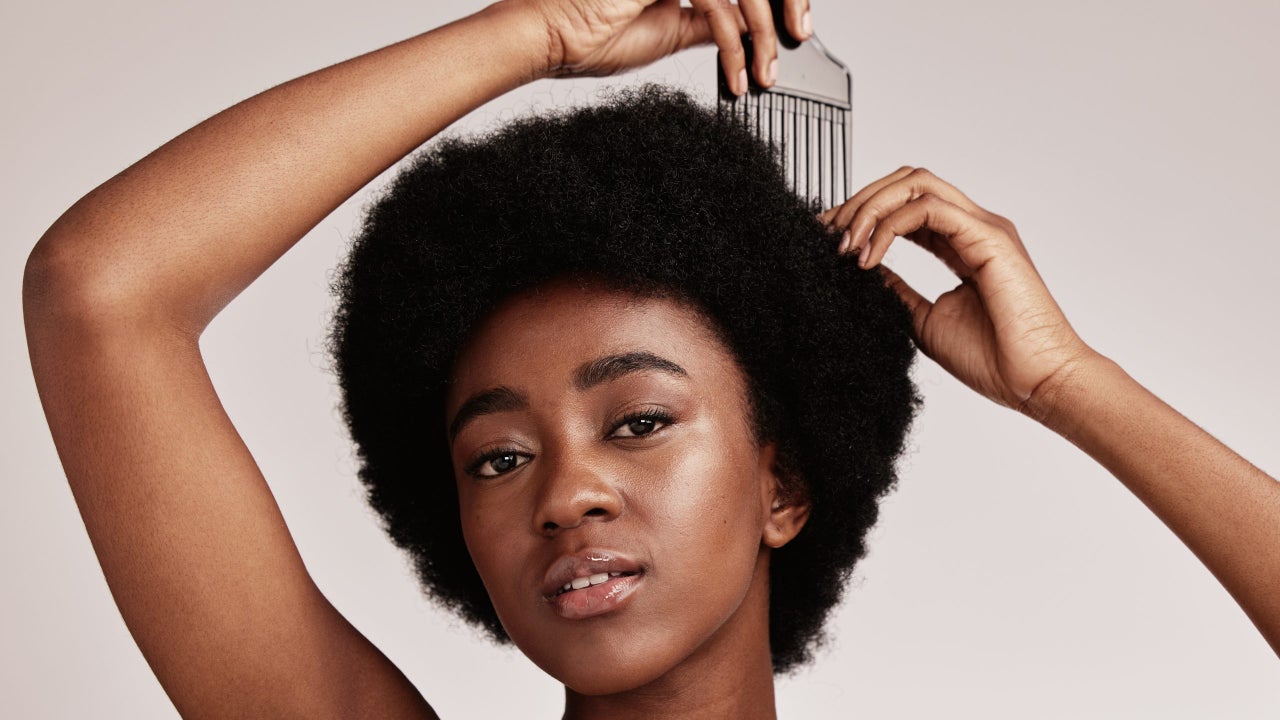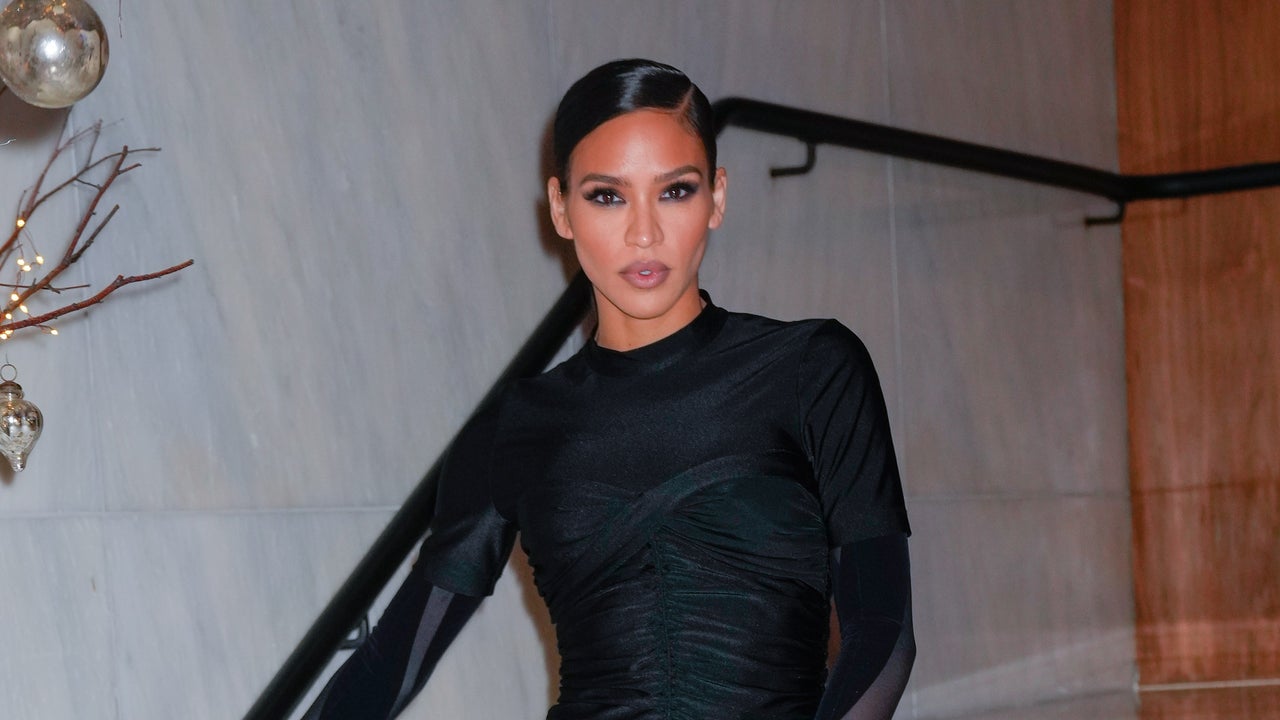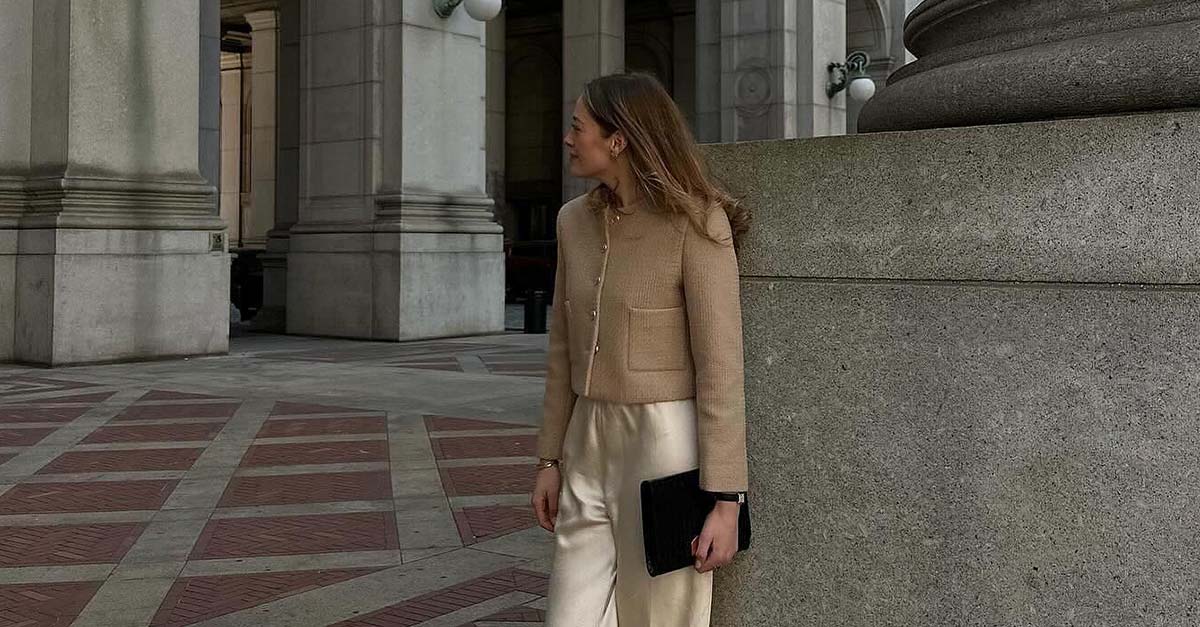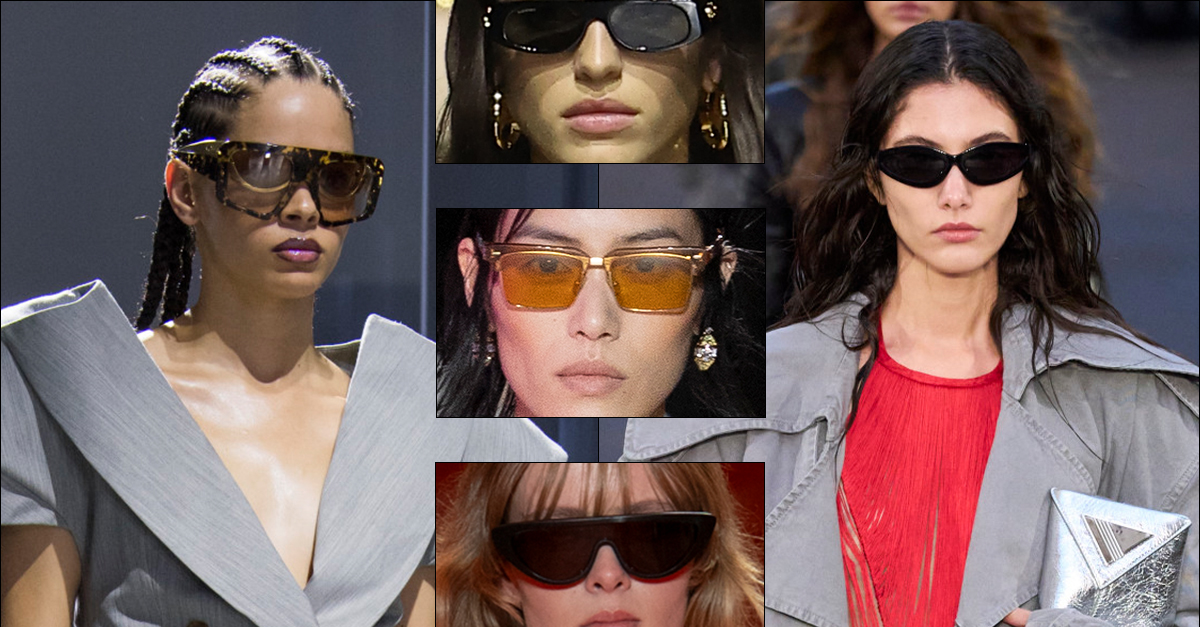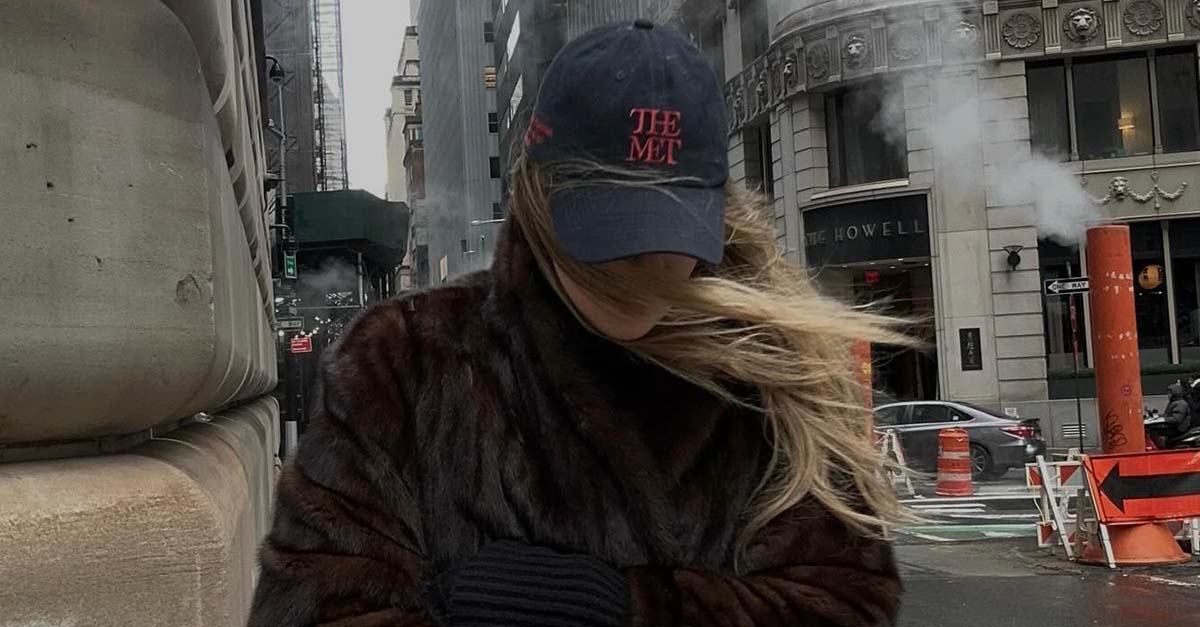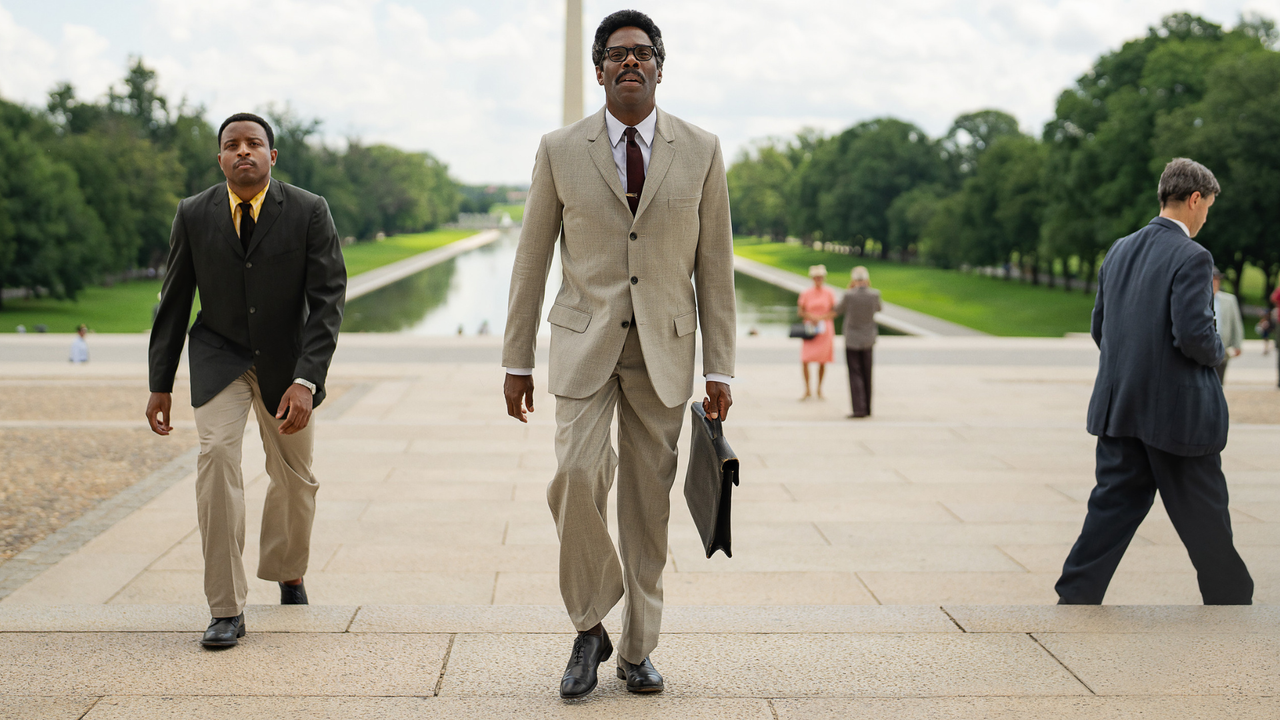
The George C. Wolfe-directed Rustin tells the story behind the historic 1963 March on Washington with a twist. Rather than centering around Martin Luther King Jr., the film tells it from the vantage point of Bayard Rustin, a gay Black activist who isn’t often associated with the monumental moment. Played masterfully by Colman Domingo, Rustin’s life is depicted in a manner that feels deserving and intimate largely due to the costuming spearheaded by Toni-Leslie James.
“I’m a Broadway girl and I’ve done a lot of period plays,” Leslie James says in a Zoom call from her home. “[I’ve also done] a lot of period musicals and small, short films.” She expresses that she has a long-standing relationship with Wolfe too, and that’s what led her to Rustin. Her first Broadway show was the director’s musical Jelly’s Last Jam. “When I got the call for this film, I was pleasantly surprised, and it was a daunting task, but I’ve taught costume history for 15 years.” She feels that her extensive experience in costuming prepared her to depict the Civil Rights era.
With her background, her team, and her contacts in tow, Leslie James hit the ground running in 2020 after being selected as lead costume designer. Much of the film was shot in Pittsburgh and she shares that on-location in Pennsylvania there was an assortment of antique clothing stores that she purchased and pulled from. “I couldn’t believe [it]. That was really a lifesaver for us when we started out because a lot of people were doing [period] movies at the same time.” She also bought clothing from boutiques all over the country in cities like Poughkeepsie in New York–there she came across a shop where she was able to purchase nearly 25 suits from the ‘50s and ‘60s which were cut up, tailored, and copied.
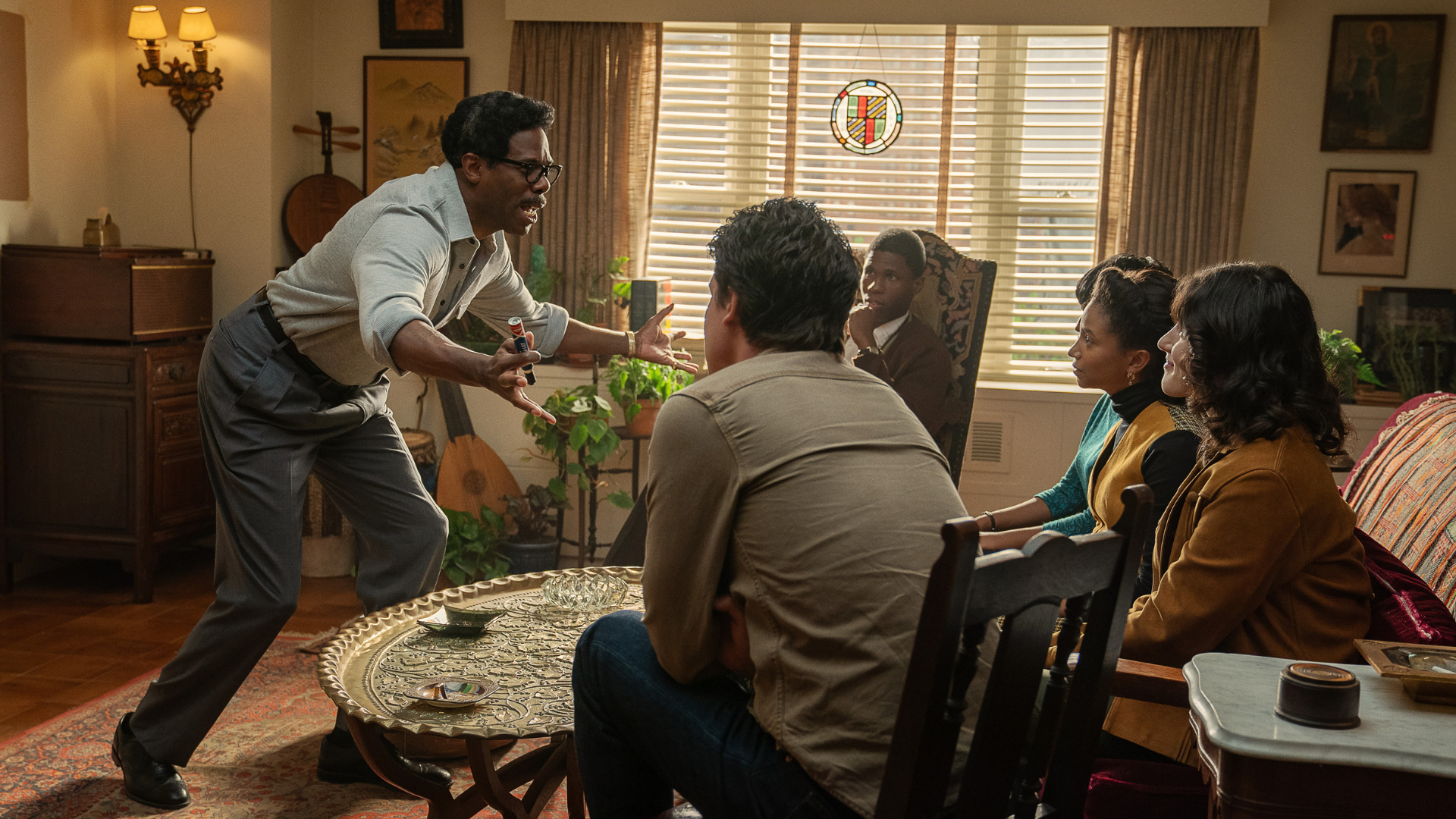
In the film, Domingo’s Rustin appropriately wears suits that appear comfortable on him when he’s out and about in New York City. Half of his suits were custom-made by a designer based in California, Serj, while the other half were from the Poughkeepsie boutique, which is now closed. “We used some of the suits on other people,” she said. Leslie James mentions that she also worked with Eric Winterling, a costume designer in New York on Domingo’s suits. For his home outfits which are much more relaxed, Domingo wears laidback collared shirts and loose trousers. At one point while in his apartment, he even wears a lengthy patterned, velvet robe.
“One of my favorite looks is actually [the] robe,” Domingo said. “They found this fabric in Pittsburgh and created this incredible [robe], it looks like a tapestry and feels royal. I love that Toni-Leslie James, our costume designer, went with that fabric for when he’s at home. Like you’re at home. It’s less about [how] the world sees you.” It was important for the lead costume designer to depict Rustin in suits as well as outfits that exude comfort. She notes that the robe and other pieces assists with showcasing him as a multi-dimensional human being who lets his hair down at times.
In the moments where Domingo was shown with young activists, Leslie James wanted these individuals to have distinct style cues. She placed a large amount of importance on depicting them as though they were from all throughout the nation since her research pointed to that. “[I wanted] to make sure that everybody brought that background into their clothing,” she said. “Each of the actors also had an identity. So when they all came together, we had a really smart, vibrant team. But when they were separate, you can see that they had separate individual styles of dressing.” This shined through in a myriad of ways: ‘60s style tailored trousers, a light blue floral dress, bright knit sweaters, and collared shirts in hues like orange. Their youthful energy was executed in an excellent manner. Rustin also showed viewers that they were the heartbeat of the March on Washington through telephone fundraising, strategy sessions with Bayard, and grassroots organizing.
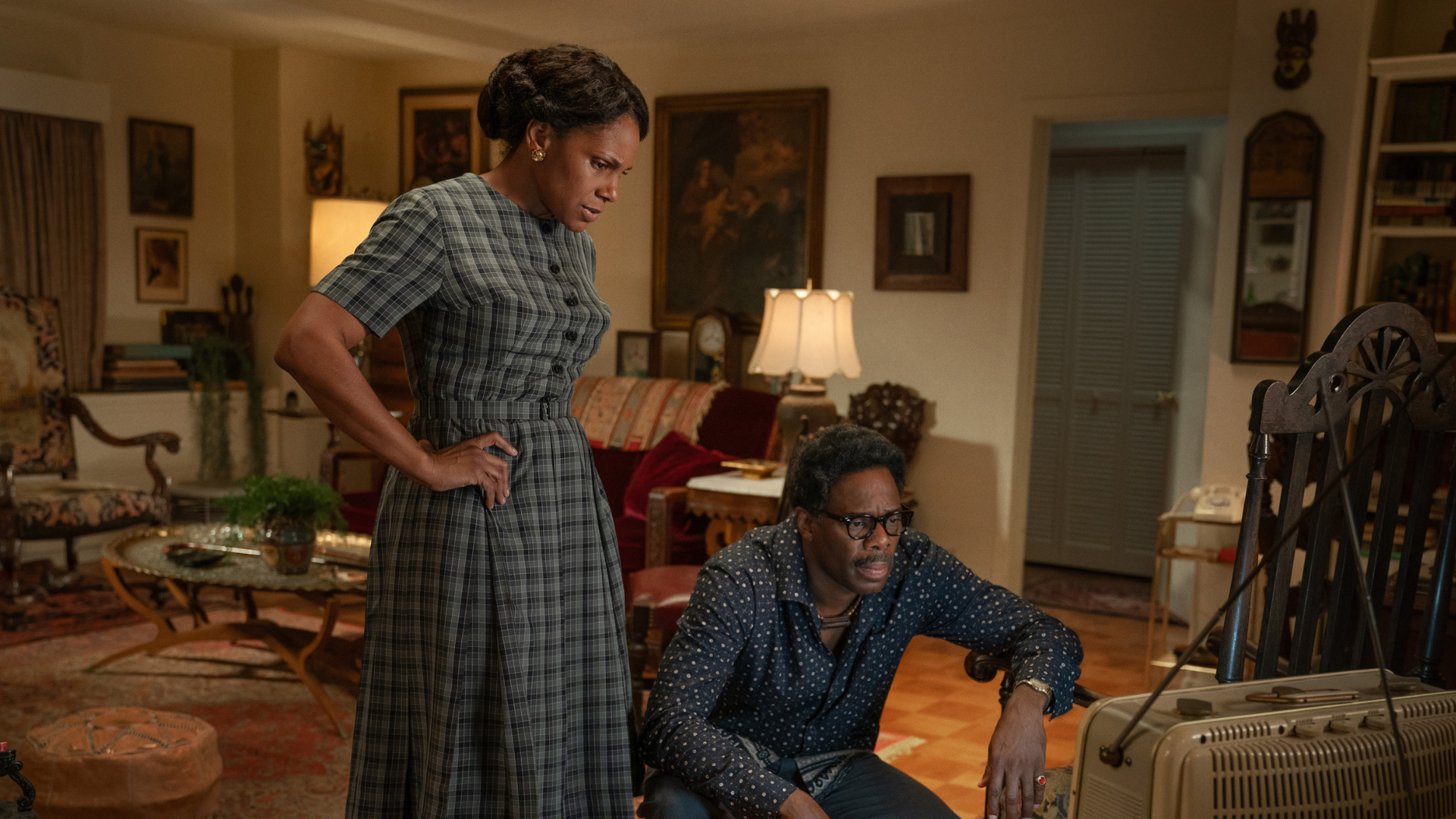
To reflect women’s clothing in the early ‘60s Leslie James used vintage imagery for inspiration for activists Ella Baker played by Audra McDonald, Coretta Scott King (Carra Patterson), and Anna Arnold Hedgeman (CCH Pounder). While Baker wore hues such as navy blue that felt somewhat uninspired, King and Hedgeman expressed themselves through their fashion. Each of these women who were pivotal to the Civil Rights movement had wardrobes built for Rustin. Baker wore simple custom dresses as King and Hedgeman donned more memorable pieces. For instance, while home with her children in Georgia, rather than being fully glamorous as she is often depicted, the former wears a relaxed floral house dress with an apron. There is one key moment where Hedgeman is seen in a meeting with mainly men and she’s wearing a maroon suit and a cream top. The dark hue speaks to the power she holds amongst a group of men.
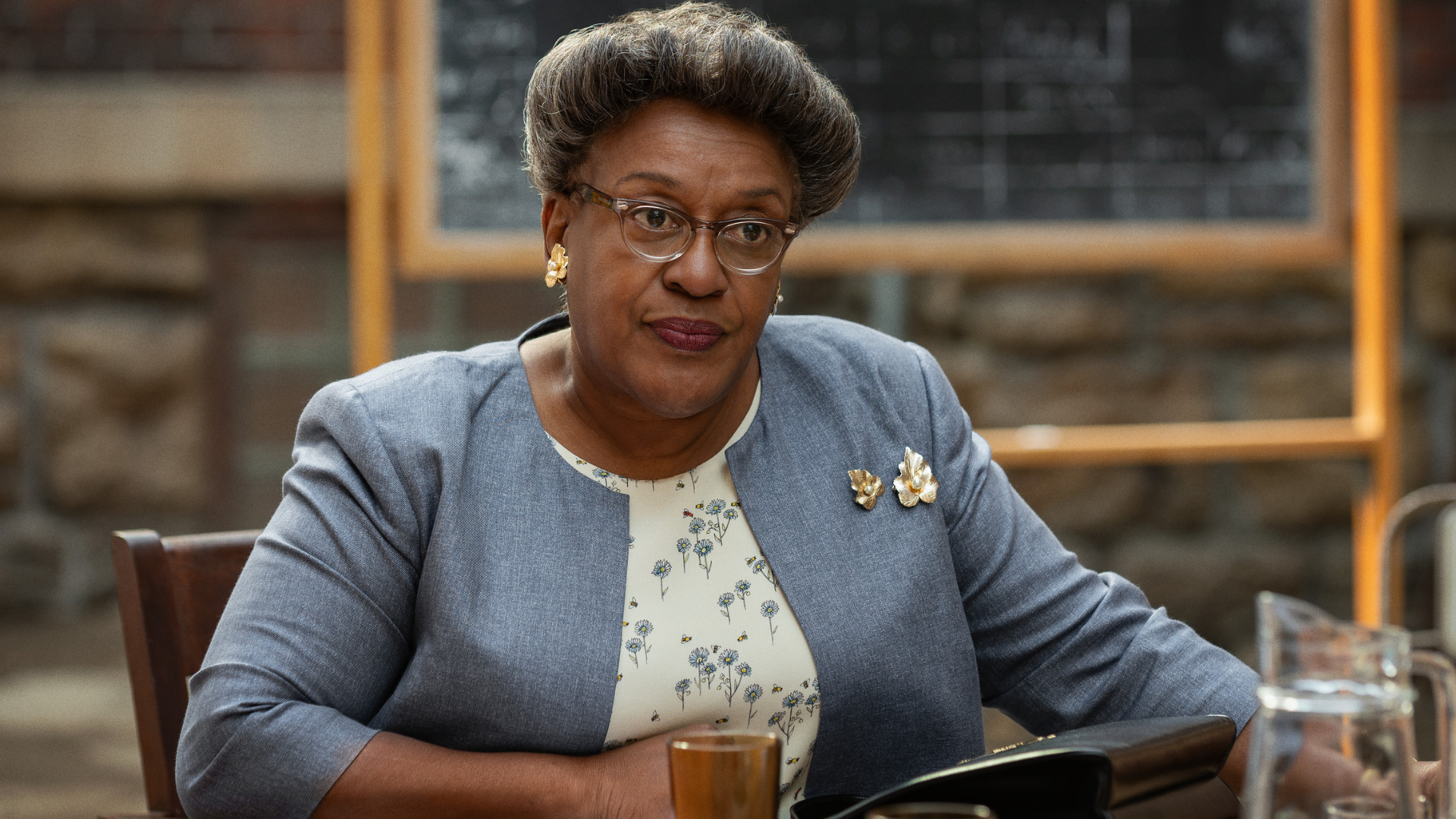
To comprehensively depict the larger-than-life figure Martin Luther King Jr. (Aml Ameen), Leslie James says all of his suits were custom by Serj too. “Martin Luther King Jr. is immaculate,” she noted. With this as a guiding light, she leaned on vintage images of King and also decided to showcase him in outfits that exude comfort and relaxation. “I thought it was important that we get away, that we not look like a life photo shoot and actually portray these people as they are in home.” That meant outfitting him in pieces like knits and shorts in hues of brown and even a dark brown knit cap he wore in his Georgia home that felt very ‘60s.
As for the trailblazing March on Washington scene, Wolfe requested for organizers, attendees, and background characters to wear pastel hues and Leslie James accomplished that brilliantly. For that last major scene shot in Washington, D.C., hundreds of actors and actresses were seen in striking shots making for a thrilling moment. “It came together in such a beautiful way, and I’m just so appreciative of having the opportunity,” Leslie James said.
Below, we speak with Toni-Leslie James on how she pieced together the costuming in Rustin, working with George C. Wolfe and working with the cast which included Colman Domingo, Audra McDonald, Chris Rock, Glynn Turman, CCH Pounder, Aml Ameen, and more.
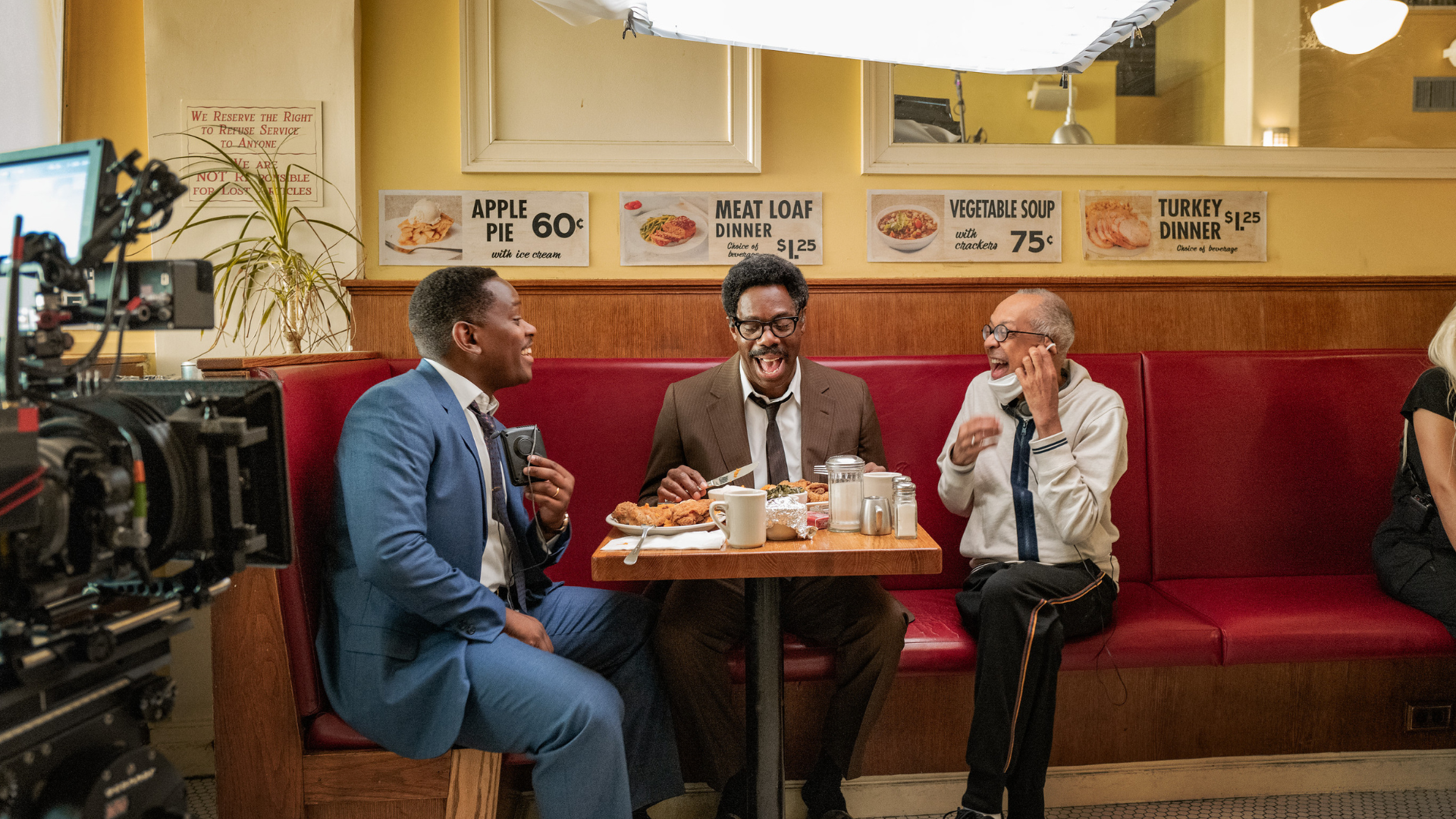
ESSENCE.com: First, I have to ask what it was like working with George C. Wolfe?
Toni-Leslie James: In specific scenes, he gave me specific directions that he wanted to go in, but I mean, the beauty of working with George is you sit down and you talk about a lot of things around the film, a lot of things of what’s happening at the time of the film without actually talking about the film. I think because of our long association, there’s a trust factor there. I had specifics. We looked at a lot of research. We talked about a lot of character research. We talked about specific costumes like the core costumes, buttons, what they wore during the march, different hats, different banners, and different types of people he wanted to see at the march. But George, if he trusts you, he allows you to have a lot of, I think, creative license in developing the characters,
You mentioned previously that your background is largely focused on theater, how does this work differ from working on costuming for your first film?
One of the things that you come up against when you’re doing films like with theater, when we’re doing theater [or] when we’re doing a Broadway show, it’s mainly the time that all the shops have, because most of our clothes are being built. So you run into a conflict that you have to space out all of your shows between five or six different shops. With film, you run into the thing that if you’re doing a show that is set in the ‘60s, there are probably 20 other shows that are doing shows, [or] a movie set in the ‘60s. So when you go into the large rental houses in Los Angeles, you sometimes find that a lot of the stock has been depleted, and so that’s when you start reaching out and there are a lot of people with vintage clothes around the country, so that’s when you start reaching out the shops in Atlanta, vintage clothing suppliers and collectors and upstate New York, [and] vintage clothing people in Virginia and Washington, D.C.
What was most important to you when working on this historically significant film that centered around Bayard Rusin and the beloved March on Washington?
It’s important to bring authenticity to the clothing [since] the tendency can be to over-romanticize something, and so it’s just, I call it to run to the pretty, and most of the photographs that you see of Bayard Rustin, he’s very casual. He’s very loose. Getting Bayard [correct] was incredibly important because there’s a looseness and a comfortability with the way he wore his clothing. And Colman, Colman is incredible and he’s also very loose, very casual. I can’t say enough about him because he’s a lovely person. [Me and Colman] worked together on Broadway also so we were comfortable with each other. And also with costumes and with all actors, even background actors, you have to have buy-in. People have to feel comfortable in the clothes and you also have to convey why they are wearing this particular garment and this particular scene. So all of that together was what I was focusing on.
Was there anything in particular about Bayard Rustin that you wanted to signal with his Colman Domingo’s costuming?
Bayard [compartmentalizing] many different aspects of his life. So it was like the Bayard with the young team and where he was always working so frequently when he was with his team, the tie was loose and then the shirt was wrinkled because he’s been working all day and you rarely see him in a jacket. And then Bayard working with A. Philip Randolph and Martin Luther King Jr., and then the formality of his clothing then of the way he wears his suits. Still, Martin Luther King Jr. is immaculate, but Bayard, he may have the shirt on, he may have the tie, it’s not always completely tied, but [when] he’s there, he’s showing up in that particular work uniform.
And then you have Bayard as a Black gay man when he’s going to the bars and that sort of casualness, that’s another Bayard. That’s another set of garments that he puts on when he goes out to the bars. And then there’s the Bayard at home and the clothing that he wears there. And so it’s really such a great opportunity and a challenge, which makes it even more exciting. I like the challenges of being able to see this man in all of his life, the way he is living his life. And none of its secrets. It’s just him living his life and that’s the way he has chosen to do it.
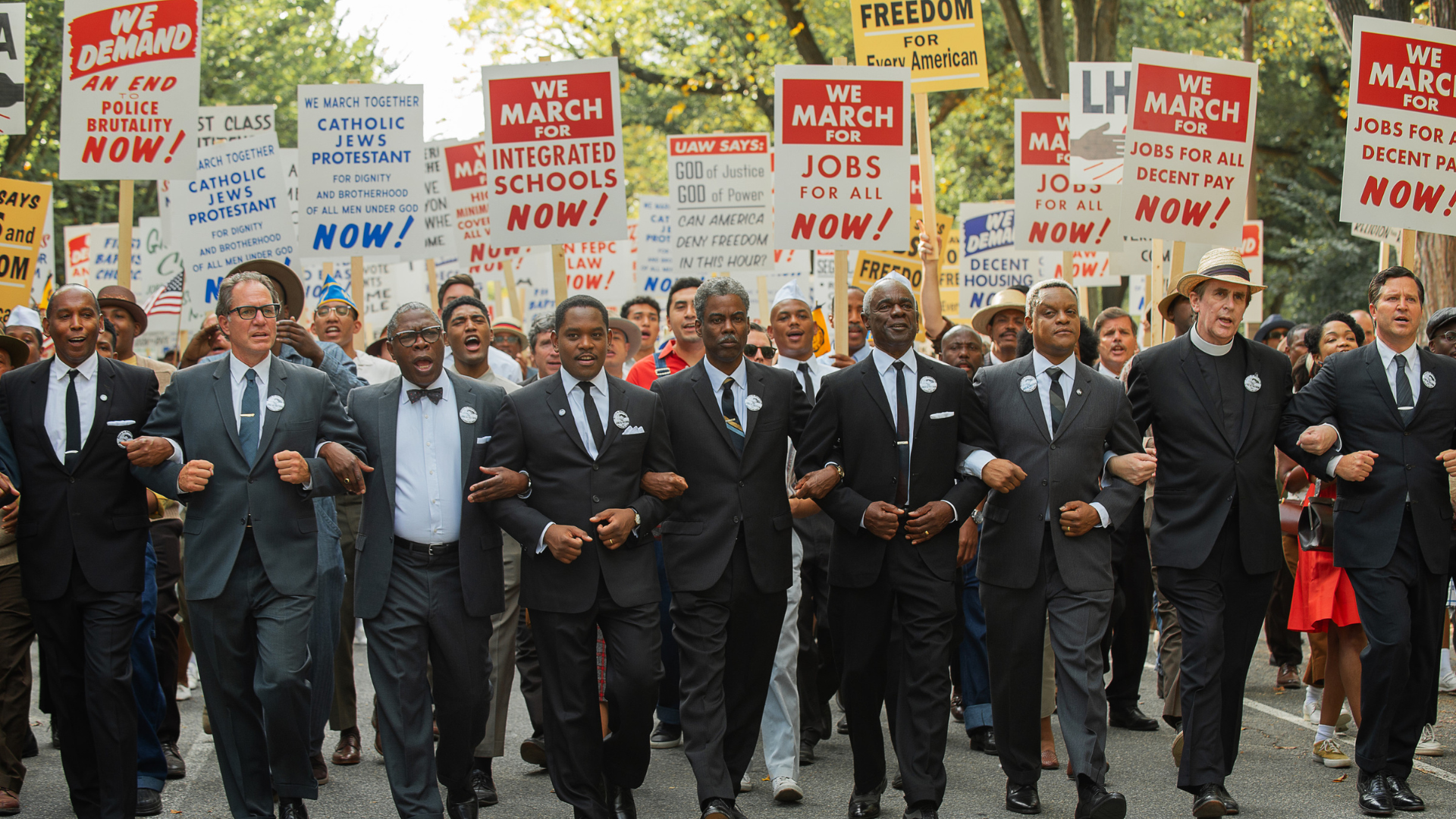
Can you talk about how you tackled the wardrobe of Martin Luther King Jr. who was played brilliantly by Aml Ameen and that scene with the laidback cap?
We [always] see [Martin Luther King Jr.] so immaculate and we see him in suits and it’s just like his suits are custom made and we always see him, but then the man has just left his house. The family is cooking dinner, and it’s just like, what does Martin wear when he comes back into his home? He’s just gone out. He’s just gone out to the store or going out for a few minutes. He’s not going to a meeting. This is a man once again like Bayard, who is relaxing at home. And I thought it was really one moment that I had that I could actually show Martin at home. A lot of times when you see photographs of the King family, it’s a magazine photo shoot.
I thought it was important that we get away, that we not look like a photo shoot and actually portray these people as they are at home. Because even in the movie, it’s easy. The Kings, it’s so easy to romanticize them. And I wanted to make sure that we had some authenticity. [Aml Ameen] wore all custom suits built by a tailor named Serj in Los Angeles.
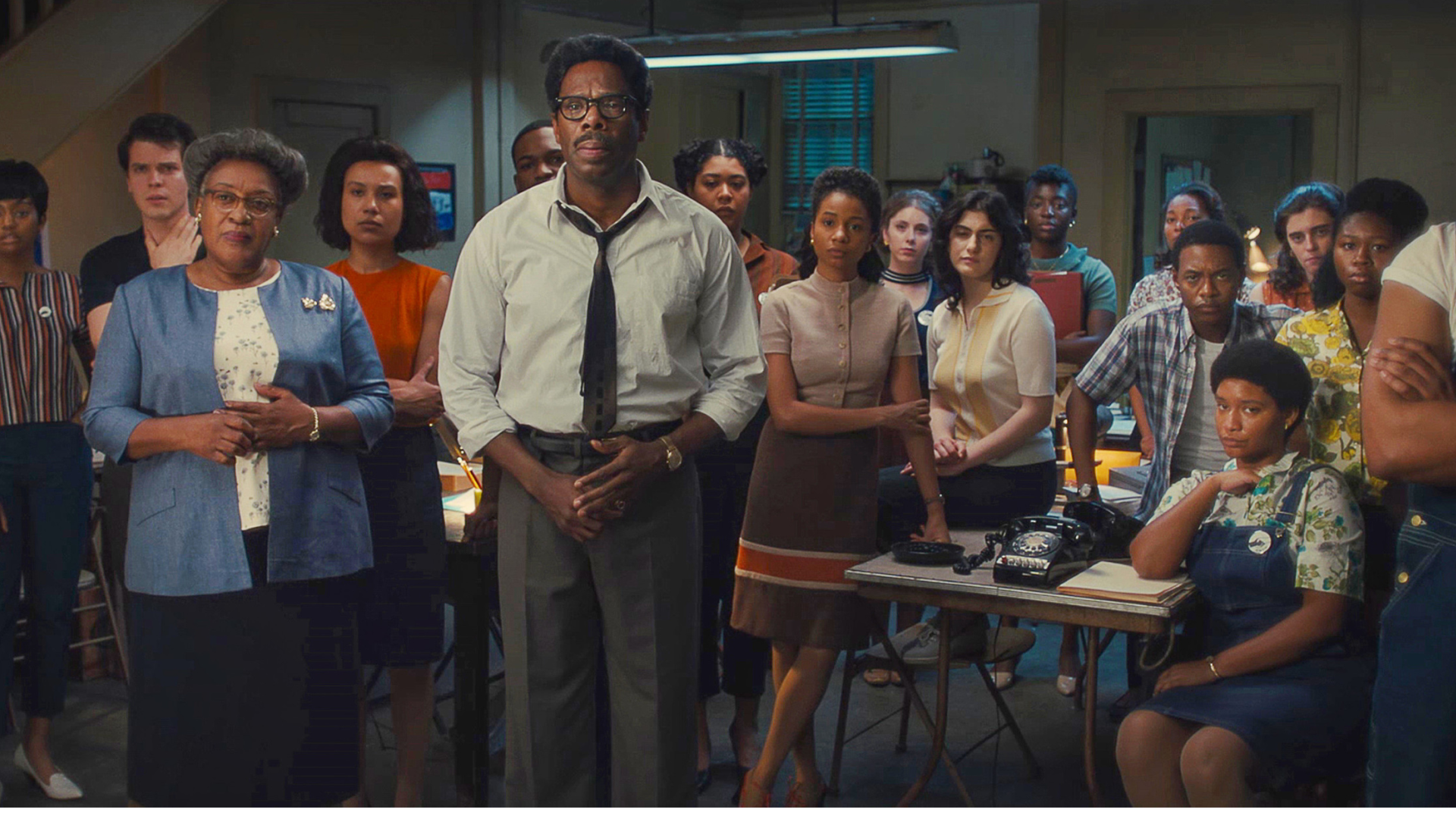
I’m excited to talk about how Colman Domingo’s suits came to life. Let’s talk about that process.
Half of Bayard’s suits were custom and they were made by Eric Winterling in New York. And the other half, one of my assistants, Nicky Tobolski, someone told her there was a man’s haberdashery [we needed to go to]. Let’s put it this way. It was a man’s suit shop. And this gentleman had hundreds of suits still with the tags on them from the ‘50s and ’60s. Most of them are Hickey Freeman. And so we drove to, I think it was Poughkeepsie or something like that. And this gentleman had inherited the shop. It was his father’s shop. He sold all sorts of different antiques, but in the back of the shop, it was like time had stood still and it was all of these hundreds of suits and these amazing glass cabinets. And we got there and bought about 20, 25 suits before he sold them all to a European antique clothing dealer.
When it came to the suits worn by Chris Rock who played Roy Wilkins, what did you want to shine through?
The whole thing with Roy Wilkins is [that he’s] the younger man in that group, he’s the most conservative and he repeats suits more often because that character’s not interested in clothing. Power, yes. Clothing, not so much.
Were you looking through vintage imagery as you carved out the depiction of the powerful women in the film which included Ella Baker, Coretta Scott King, and Anna Arnold Hedgeman?
Old imagery, and I mean, Ella Baker, there are research photos of her, but there weren’t as many research photos as I would’ve liked or if there [were], I couldn’t find them. But of course, there are differences. I’m getting back to being able to see Coretta and just like a cotton dress and an apron is great, because normally when we see her depicted, she’s in a skin-tight A-line silk dress, and she has the pearls and her hair is in place and everything else. Yeah, that’s great. That’s great for the march. So once again, the contrast between the march and at home and her clothing we had built. And Audra’s clothing we had built.
[Hedgeman’s] clothing we also had built. That was a really brilliant, elegant woman who helped plan [the March on Washington], but was still sort of sidelined when you come down to it. I mean, all of the women, they were crucial. But once again, we did have photographs of her in her clothing and she always dressed elegant, very professorial-like. And so we needed to have the contrast too. Because Ella Baker, you never saw her with makeup. Baker was a worker. I read a piece of research where one of the [men who] wasn’t doing the planning for the march, had told [Baker] that [she] may have more power if she dressed prettier and put on makeup and everything else. And she was a beautiful woman. And she was like, “I’m not doing that. It’s just like this is me without makeup, without any of that.” So the contrast between these three female leaders had to be present. And that’s what we were going for when we were looking at the costumes.
You were building up to the impactful March on Washington, how did you and your team pull that off with hundreds of background characters?
We had an amazing team. I would say we had 14 different designers and wardrobe people who did all the fittings for the background. So there was a period where we would fit maybe 80 people a day for a couple of weeks, and then they would do a lineup. And then I would look at the photographs or if I was there present, I’d go upstairs, we’d line everybody up for looks and then I could say, “Change the shirt, change his hat. Change, etc.” So we were really meticulous in making sure that everyone was dressed properly. I just can’t say enough about the team. They were just really great. Great support, smart, amazing eyes, but it took a village. That wasn’t all me.
The quote included in the story from Colman Domingo was provided by Netflix and was captured before the SAG-AFTRA strike.

